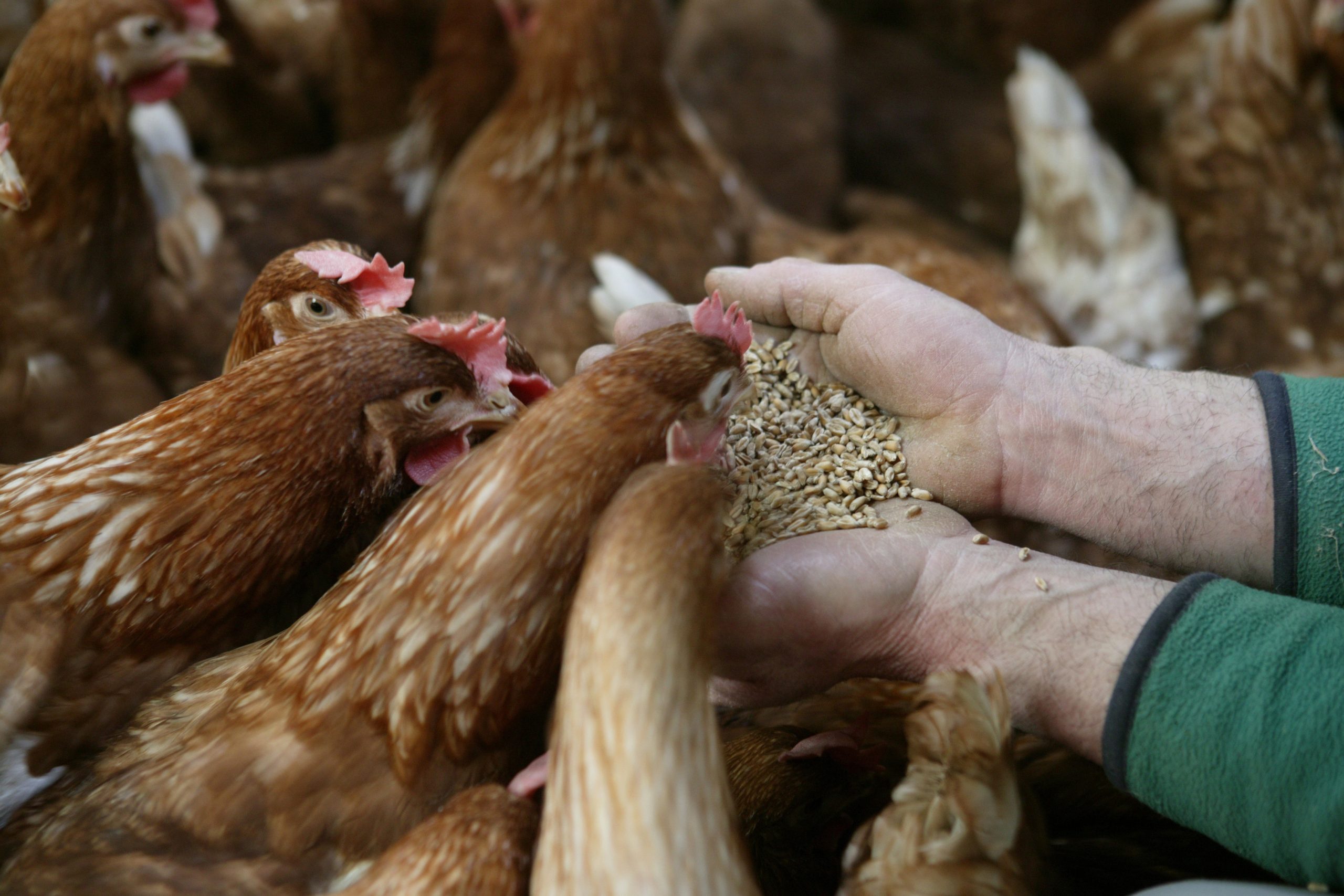Reducing antibiotics: A chain approach

Reducing antibiotics in the animal production chain requires a full chain approach. From biosecurity measures to the development of new feed additives. What does this entail and how has this been applied in the French pork production chain?
The reduction of antibiotic use in animal production systems has become a worldwide public health issue and to develop an effective strategy, different parts of the production chain must be looked at (Figure 1). Of course it all starts with having a healthy animal. Prerequisites for having healthy animals include for example: proper housing conditions with access to fresh and clean water.
Figure 1 – Antibiotic reduction through the whole production chain.

Water quality management
Water is the first need for all farms animals:
- Includes many essential nutrients required for the health of animals
- Necessary for animals to eat: an animal that does not drink will not eat
- It can be used as a way to distribute medicines to animals when they are sick.
There can be huge variations in the water quality, as the quality can be influenced by the type of soil and the way it is handled and stored. The latter can affect the physical, chemical and bacteriological condition of the water. Whatever the origin of water (network, well or drilling), it is necessary to adapt practices and treatments used in farms to permanently offer clean water to the animals. Farmers can for example use water quality management software (to help in the diagnosis of water quality and to implement guidelines to improve water quality, according to the animal species, their physiological stage, the number of animals at the farm and the equipment used). Other tools are available on the market to help different players in the production chain towards technical and sanitary improvement of livestock breeding for example.
Reducing bacterial contamination
The term biosecurity is used for the procedures or measures designed to protect the animals against harmful agents in the environment. Biosecurity is an important factor in keeping animals healthy and hence reduce antibiotic use.
The implementation of sanitary measures from farms to slaughterhouse is necessary to ensure good sanitary conditions.
These measures include:
- Barriers at the entrance of farms, the application of the principle of one-way flow, the maximum reduction of the infection pressure in the environment passes by a good practice of cleaning and disinfection.
- Each step of the production chain should be controlled, in order to limit the risks of contamination of bacterial origin.
- The goal is to reduce the prevalence of infectious agents responsible for CFP (Collective Food Poisoning), contracted after consuming contaminated beverage or food with pathogens such as Campylobacter or Salmonella.
- The identification of hazards and critical control points at each step of the production chain is necessary to improve practices and ensure a healthy end-product.
- Finally, it is important to pay attention on the agreements and marketing authorisations of biosecurity products.
Effect diet and feed additives
The quest is on to produce healthy animals with a strong immune system and nutrition has a big influence on this. A well-balanced diet, consisting of high quality raw materials and a premix (vitamins, minerals, amino-acids), stimulates the animal’s immune system. Regular quality control should be done to ensure that the formulated feed still meet the nutritional needs of the animals, but also to check the consistency between the nutritional values of the raw materials with the ones registered in the formulation software. The use of a near infrared system (NIR) is a very effective tool to make these analyses. Undesirable substances, such as mycotoxins, should also be detected, because they can decrease animal performances without any visible cause. A well balanced diet also often includes feed additives to improve gut health or immunity for example. Think of phytogenics, organic acids or probiotics. New regulations and increasing consumer pressure on antibiotic reduction has spurred companies to develop new feed additives, based on innovative active ingredients. The advanced work around these products has led to very sophisticated products, which can act on targeted parts of the digestive tract. These products can be adapted to each species of animal at every physiological stage of development. The goal is to use the right amount of product, and release it at the right place and the right time, while avoiding losses into the environment. This is especially useful as the regulations become stricter, as with the use of zinc oxide in the European Union.
Responsible antibiotic use
The application of the above mentioned measures are needed to reduce antibiotic use. In addition, when antibiotics need to be used (in case the animal is sick and should be treated), the industry should carefully use them (meaning: only use critically important antibiotics (fluoroquinolones, 3rd and 4th generation cephalosporin and, most recently, colistin) when there is no alternative and always follow the indications (duration, withdrawal period etc.). A practical example of how the total chain approach has been fruitful, can be seen in France.
Success story from France
The different elements of a successful antibiotic reduction plan have used to develop an ‘antibiotic free’ pork production chain in France. In 2014, 2 major players in the pork processing and the animal nutrition market decided to work together on this and developed requirements related to the:
- environment
- health
- animal welfare
- nutritional quality of products
- economic profitability of production.
This has led to “Engagés dans l’Élevage” (Committed in Farming) excellence chain, implemented by Fleury Michon, the market leader in pork ham in France. This approach aims to increase the level of performance and innovation, which in turn increases the competitiveness of the farms. Today, almost 200,000 pigs per year are fed without antibiotics in France by using this concept. Through this initiative, the partners have created a virtuous sector at every link in the sector, from the farmer’s remuneration to the long-term visibility offered by this partnership, by way of the consumer, who will be offered a differentiated offer on the market for deli meats.
Pillars for antibiotic reduction in the production chain
The commitment to help the whole production chain into the reduction of antibiotic use can be divided into different pillars:
- Good breeding practices
- Biosecurity
- Nutrition and immunity
- Alternative solutions
- Responsible antibiotic use.
This approach, developed and implemented by French company Avril Group has led to a decrease of 43% in medicated feed on French rabbit farms between 2009 and 2013. In poultry, a 49% reduction of antibiotics have been noticed and for swine the chain approach has led to a 50% reduction, compared to the national level in France.
Authors: Manon Garrec, Product Manager, Animal Specialties, Avril Group And Clémence Messant, Feed Additives Product Manager, Mixscience











